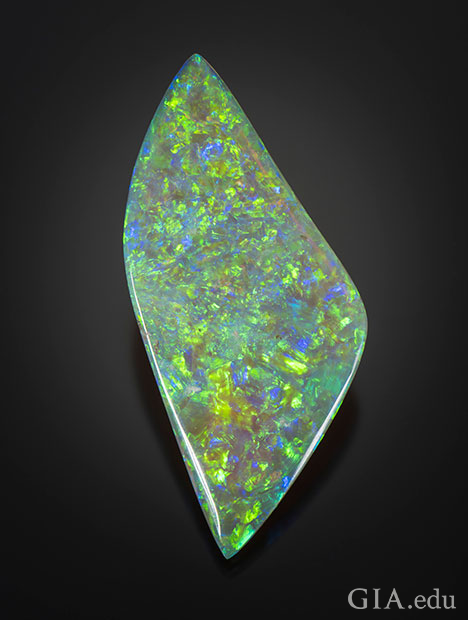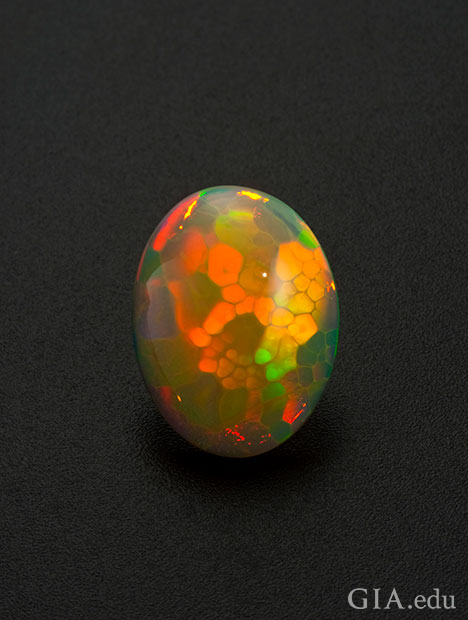The Enigmatic Gemstone: Opal’s Playful Dance with Light
September 20, 2019

The romance of precious opal begins when you catch the first glimpse of its movement with dancing light. Opal’s play-of-color can be compared to a lyrical dance, sometimes expressing itself as a grand jeté of bold, broad flashes of color, other times as smaller, quicksteps of pinpoint flashes.
Often mysterious, opal’s shimmering color can present as a flowing, continuous movement.
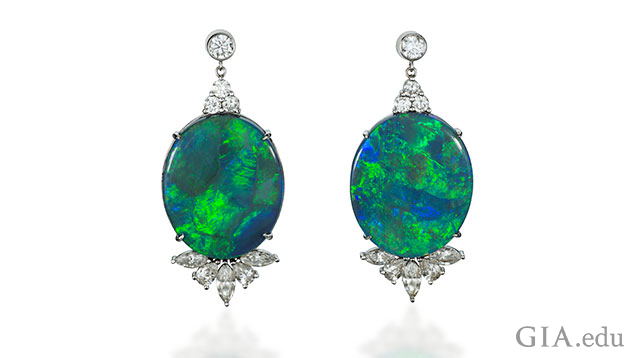
Opal’s intriguing flashes of spectral colors
Scientists believe most opal deposits formed 15 to 30 million years ago in desert areas rich in silica. Strong seasonal rains drenched the earth and soaked deep into rock, carrying dissolved silica, a compound of silicon and oxygen, with it. When much of the water evaporated during dry periods, deposits of silica solidified and formed in cracks between the layers of underground sedimentary rock, producing opal.
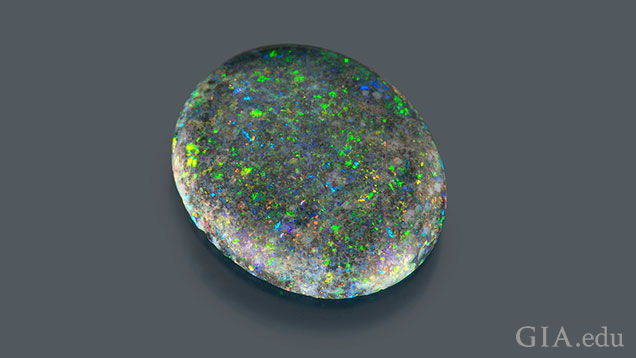
The shifting spectral color of precious opal is a result of light that reflects off its closely packed silica spheres. The arrangement and size of the spheres result in the varying patterns and colors of the opal’s play-of-color, including:
- Pinfire or pinpoint: small, closely set patches of color
- Harlequin or mosaic: broad, angular, closely set patches of color resembling a checkerboard
- Flame: sweeping reddish bands or streaks that shoot across the gemstone
- Peacock: mainly blue and green flashes of color
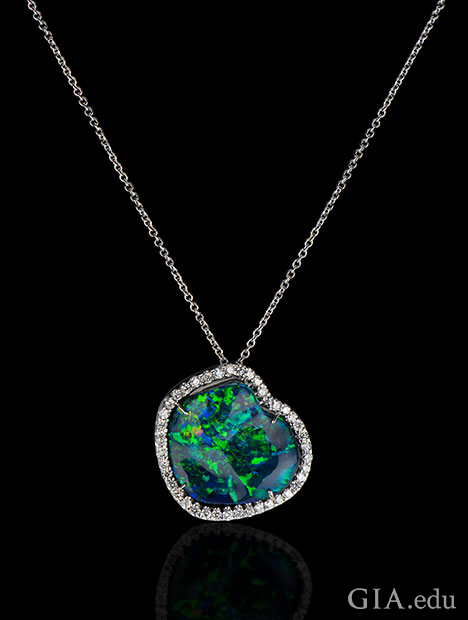
In addition to the size, shape and arrangement of its silica spheres, opal’s underlying body color contributes to its overall appearance:
- Black opal – a dark body color that generally exhibits bold colors of blue, green, red and orange.
- White opal – a white to medium gray body color exhibits the blue, green, red and orange hues in a softer tone.
- Fire, water and jelly or crystal opals – develop under different conditions and are transparent. They form in red, orange, yellow and brown hues. If they have play-of-color that increases their desirability.
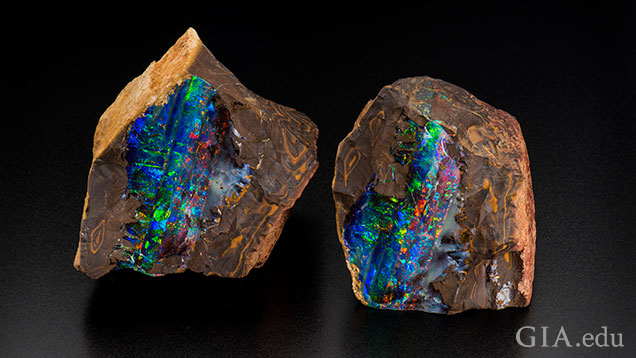
Boulder opal has a thin layer of precious opal that is cut to include matrix, which serves to reinforce the gem. Often cut in one-of-a-kind shapes, it offers designers and consumers an affordable alternative to black opal.
Common opal, also called potch opal, is an opaque gem-quality variety showing no play-of-color and occurs in pink, blue and other colors with high to low saturation and varying patterns.
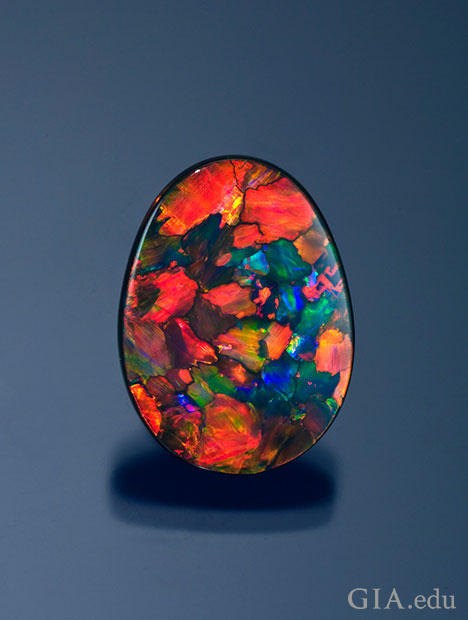
History of opal
The modern birthstone of October, along with tourmaline, opal was dubbed “queen of gems” in ancient times because of its flashes of reflected light. Humans have been intrigued by gemstones since antiquity and developed a passion for them as they acquired wealth. Mines in the region of Hungary supplied opal to ancient Romans and continued to produce for more than 2,000 years, until 1922.
Australia’s outback began opal production in the 1890s. Lightning Ridge, Andamooka, Queensland, White Cliff and Coober Pedy are noteworthy Australian localities for black opals. Some opal sources in Australia are thought to have formed about 400 million years ago. For example, the Great Artesian Basin of Australia, once an inland sea, is a well-known region for today’s opal. Opalized fossils from the age of dinosaurs have been uncovered in opal fields. Most of these come from Cretaceous marine and freshwater aquatic reptiles 100 to 120 million years old. Any material, such as shell, bone, and wood that can become fossilized, can also become opalized.
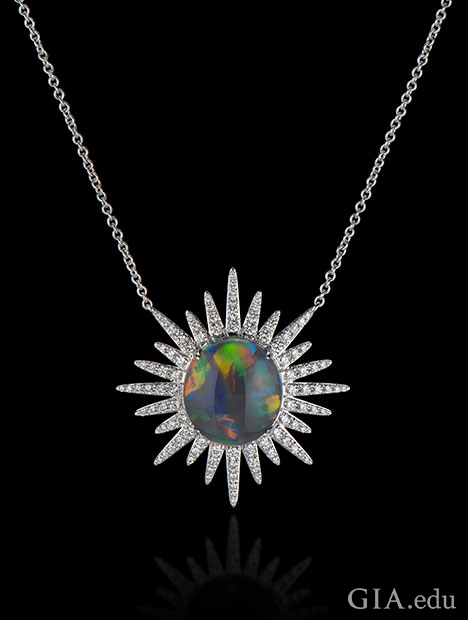
Queen Victoria began to wear black opals from Lightning Ridge, Australia soon after they were discovered there. Design houses Tiffany, Lalique and Cartier also began the romancing of black opal, featuring them in Art Nouveau jewelry.
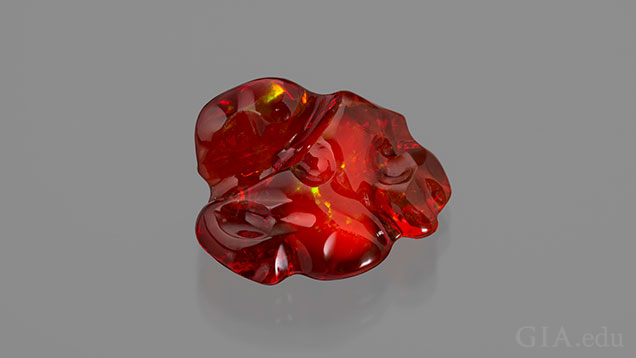
Mexico is also a major source of fire, crystal and water or jelly opals, and Ethiopia is producing precious opal.
Care of Opal
Treat your opal with gentle care. It is a delicate and soft stone (5.5-6.5 rating on the Mohs hardness scale) and because it contains 5-20 percent water, it should not be allowed to dry out too rapidly or it may crack.
If you heed this advice, you will enjoy many happy years with your lively, colorful, precious opal.
Learn more about opal’s history and lore in the Gem Encyclopedia and its significance as one of October’s birthstones.
Sharon Bohannon, a media editor who researches, catalogs and documents photos, is a GIA GG and GIA AJP. She works in the Richard T. Liddicoat Gemological Library and Information Center.

